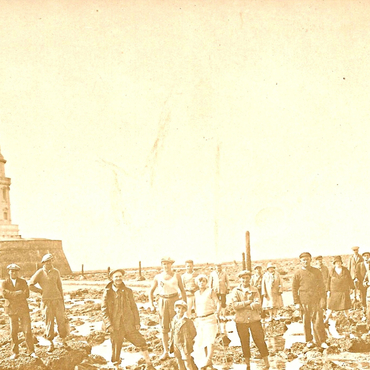
- Home
- King of Lighthouses
- Visitors to the lighthouse
- The invasion of Cordouan
By the mid-1930s, even though paid holidays had not yet been introduced in France, Cordouan was experienced unprecedented waves of tourists. The Lighthouses and Markers administration was well aware of the potential attraction that lighthouses in general – and Cordouan in particular – represented. As early as the 1860s, regulations were issued governing visits to lighthouses, forbidding tips and creating a special book where visitors could write their names and details. But Cordouan, an offshore lighthouse, created a series of challenges. The keepers organised a system whereby groups of 15 visitors would be admitted every fifteen minutes for the two and a half hours that the lighthouse was open, or a maximum of 120 visitors each day. For safety reasons, visits would start halfway through ebb tide and stop a half hour before the tide turned. The lighthouse was a victim of its own success, and was besieged during the summer months by visitors who would be dropped off by boatmen from Royan. The boatman had no quotas, but followed regulations laid down by the Maritime Prefect in 1885, after the accidental drowning of four tourists revealed how negligent the system was. Discussions between the Ponts engineering school and the Maritime Affairs administration showed how poorly-managed visits to Cordouan were. No department wanted to take charge of the overall organisation of visits – or rather they closed their eyes to the arrangements between the Royan boatmen and the lighthouse keepers, who sold, with the blessing of their superiors, a brochure about the history of Cordouan drawn up by the engineer at Verdon-sur-Mer. The Second World War and the destruction of Royan put an end to visits to the lighthouse. But, given the monument's history, it was no surprise when, during the 1980s, the Lighthouse Service and the ferrymen restarted them, admitting 220 visitors each tide.
